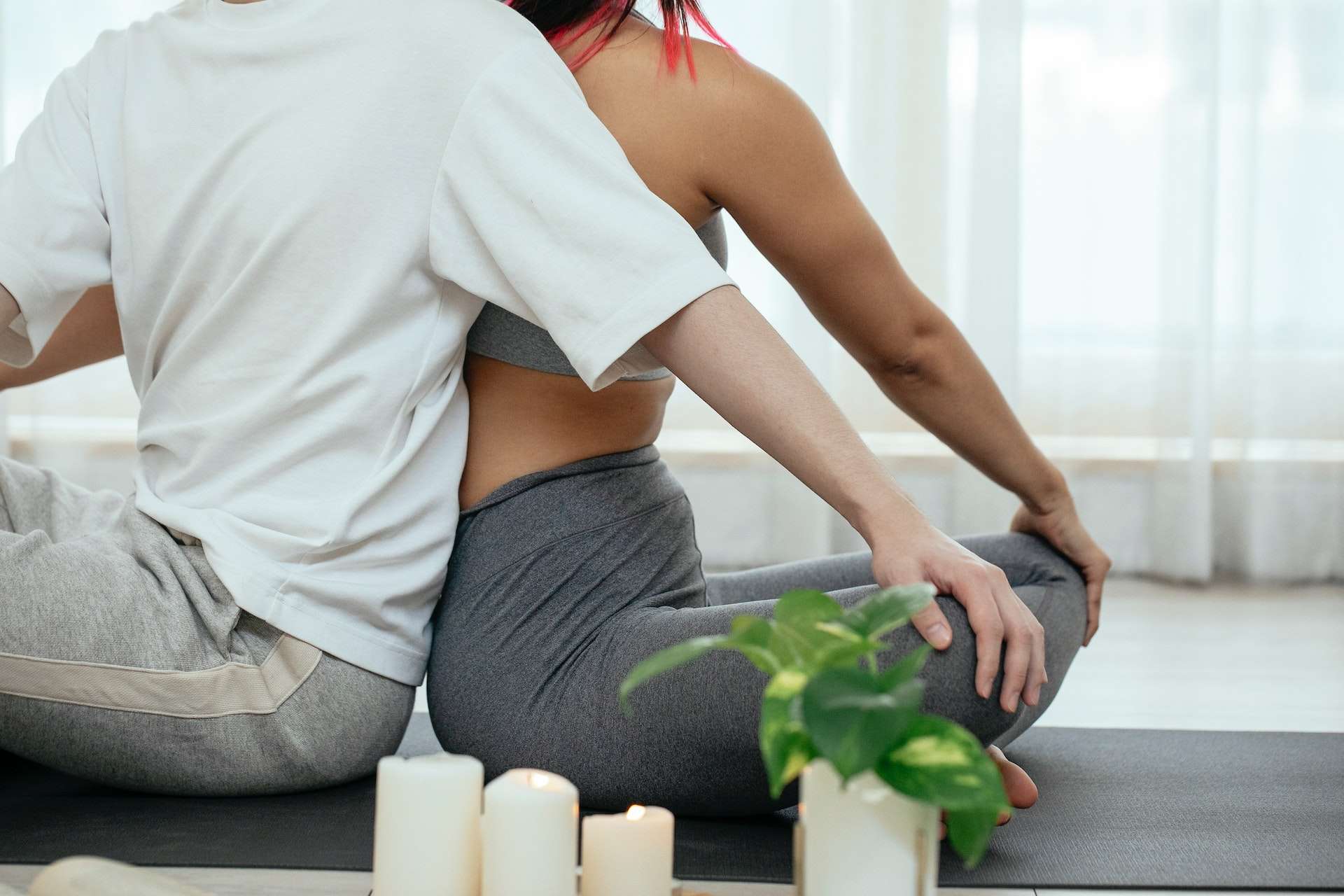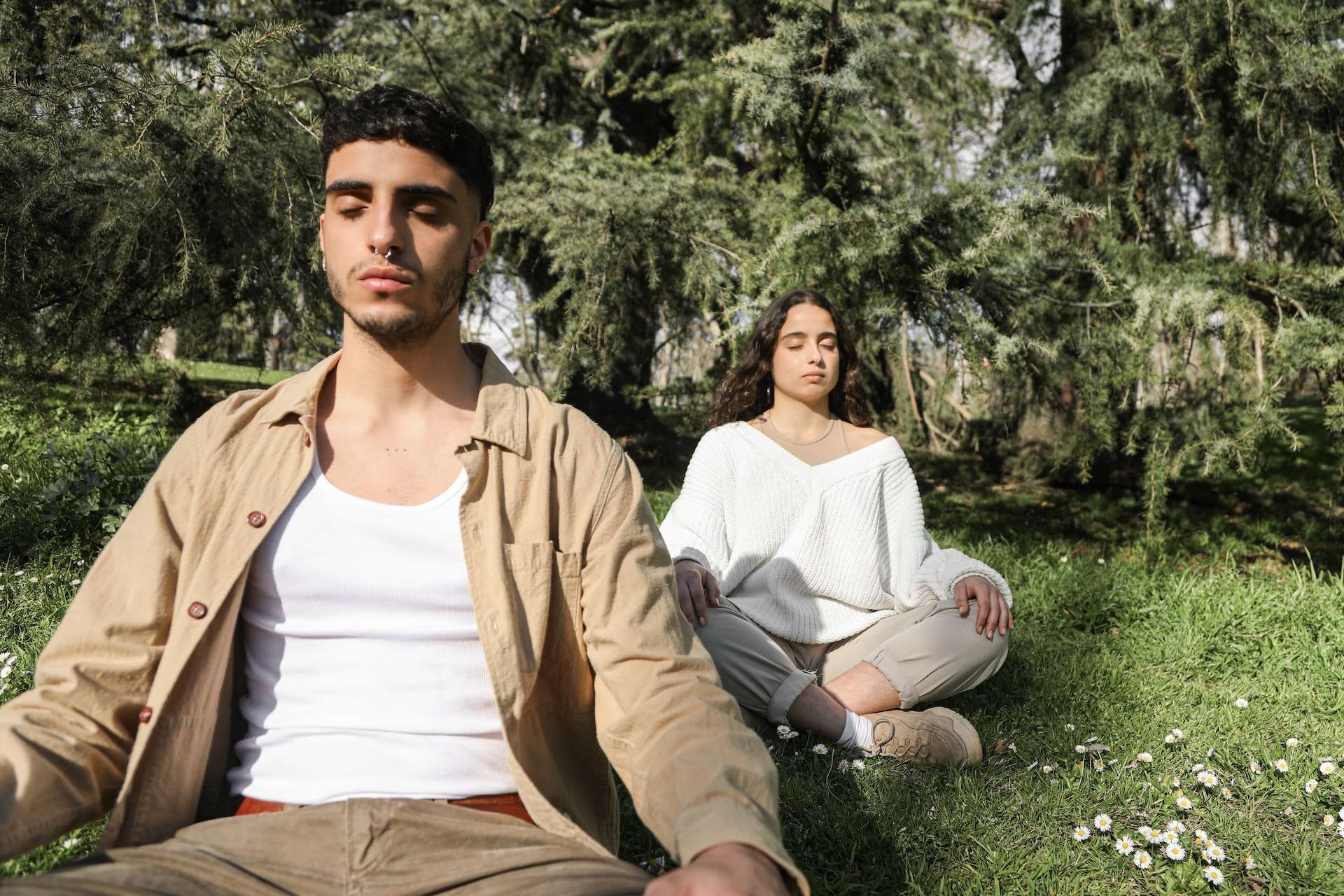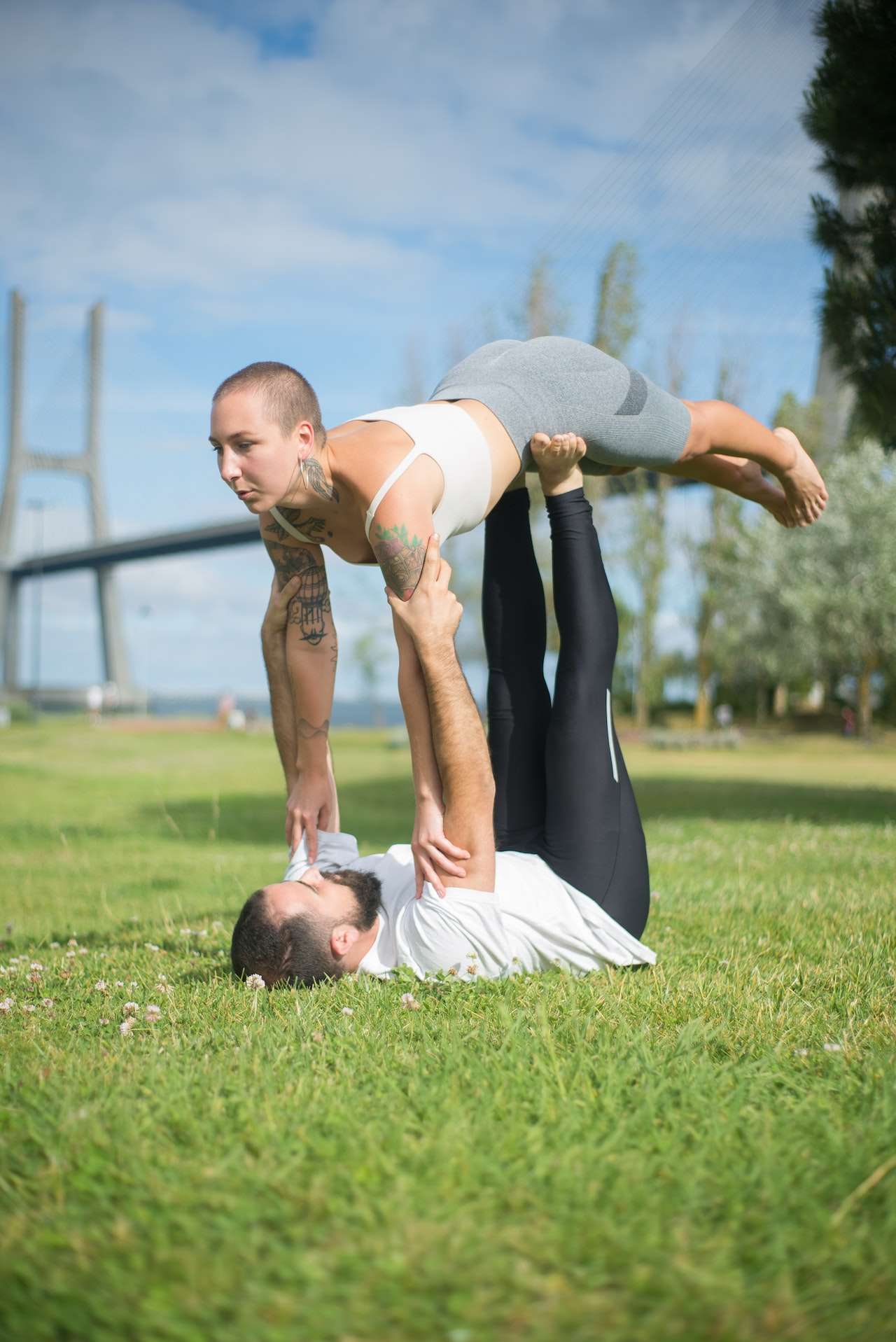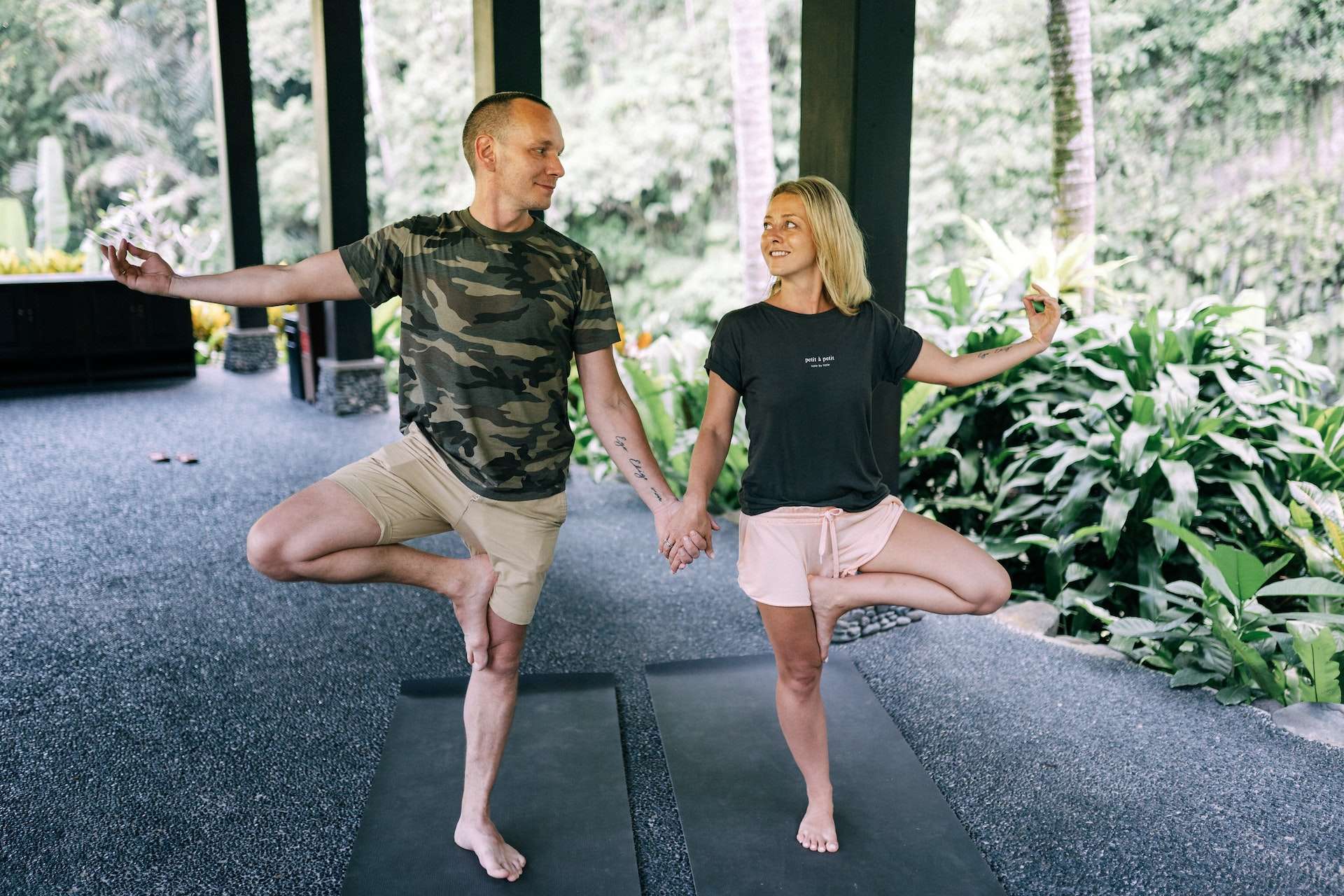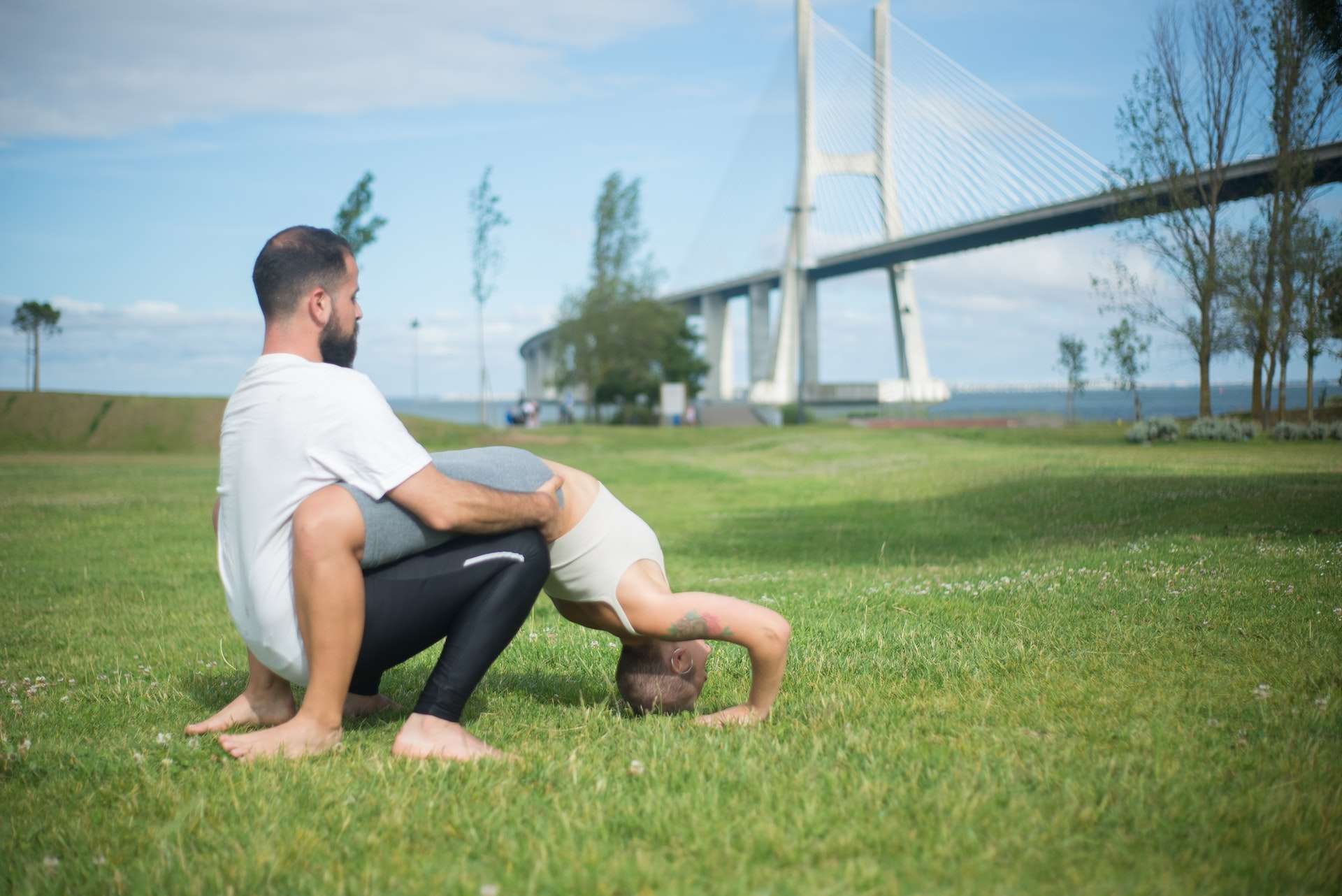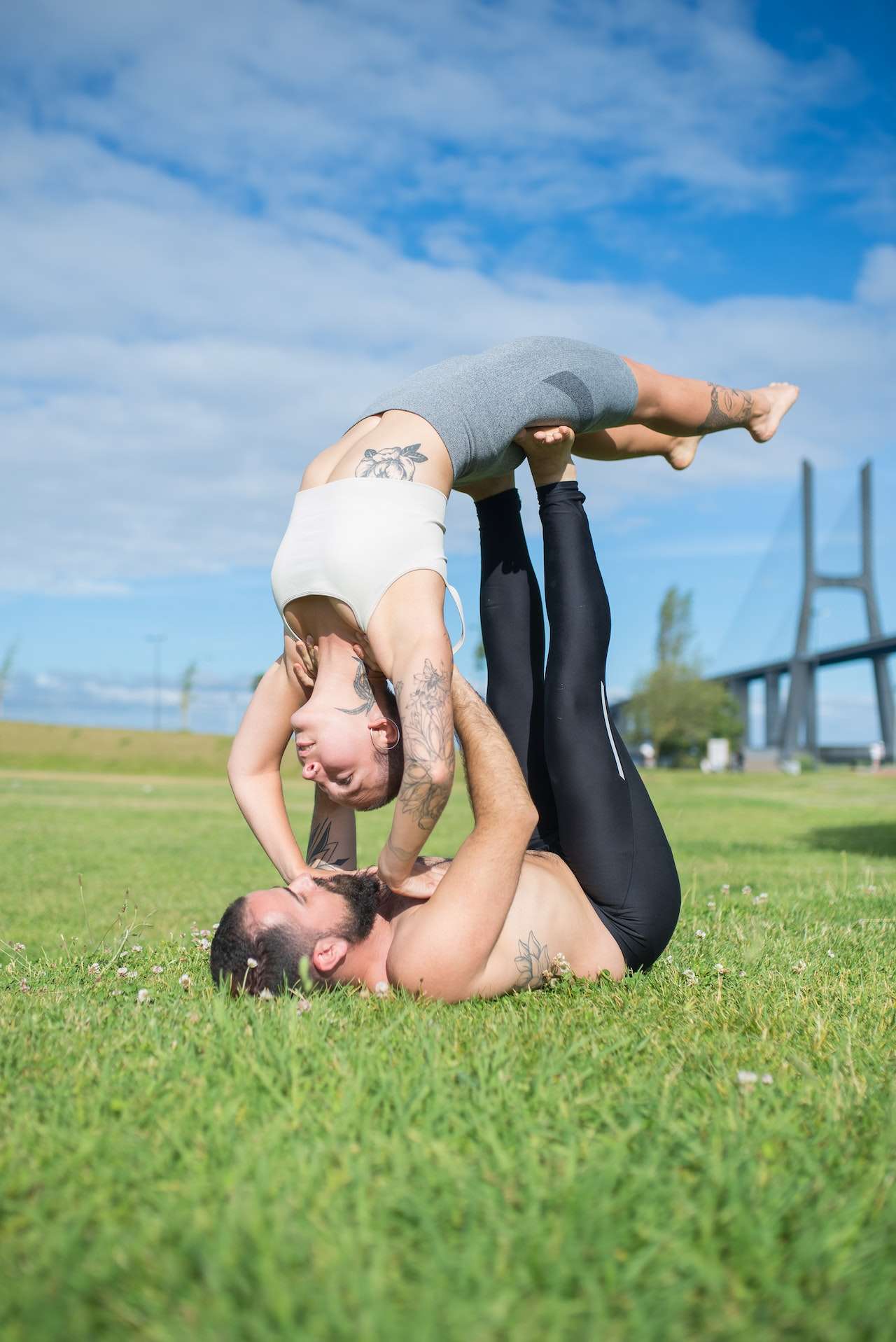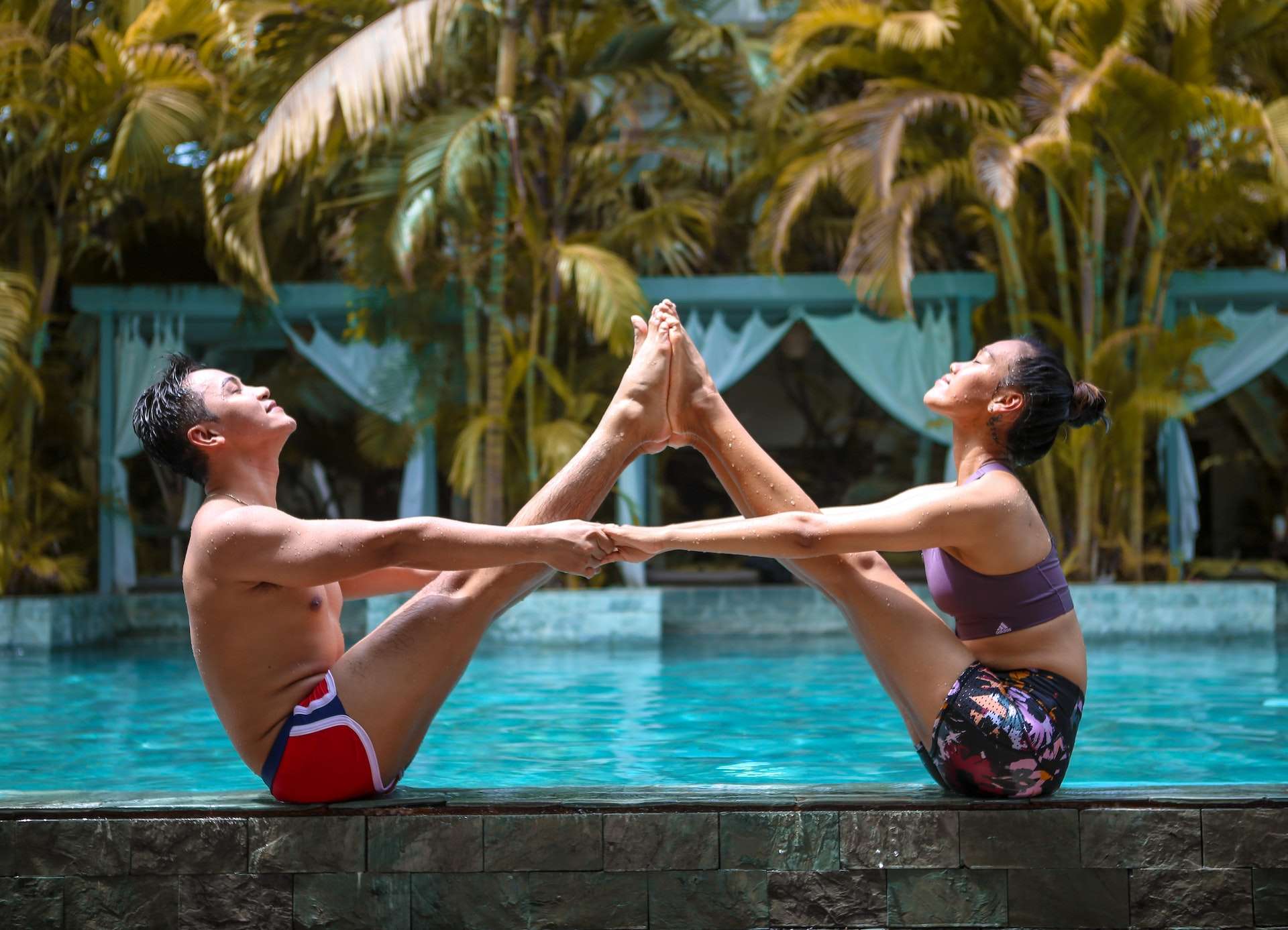|
Are you ready to take your yoga practice to the next level? Have you ever wanted to master yoga poses for two people with your partner? To do this well, you need effective ways to communicate with each other during the poses. Ready for a revolutionary experience in yoga? This article will teach you how to make your partner feel like they are a part of something extraordinary – something so powerful that it goes beyond words. We’ll show you how easy it is to make each pose flow seamlessly using simple yet effective communication techniques. You don’t have to be an expert yogi or have a long history of practicing together – anyone can become an expert at communicating with their partner during yoga poses. By the end of this article, you’ll be able to create an unforgettable experience for both yourself and your partner that will leave everyone feeling inspired and in awe!
Table of Contents
show
The Importance Of Clear And Consistent CommunicationThe importance of clear and consistent communication during partner yoga must be considered. Every pose requires synchronization between both partners to ensure that each person is comfortable and in the proper posture. It’s essential for partners participating in partner yoga to communicate effectively so that their poses are in unison. Communication should involve verbal and physical cues so both partners understand precisely the direction they should be going in.
Verbal cues can include words such as “ready?”, “go” or “stop.” Physical cues can include tapping on a shoulder or gestures to indicate when it’s time to move or stop. Both verbal and physical cues help clarify partner poses so both people know what is expected from them. By being mindful of these communication techniques during a partner pose, couples are more likely to have a successful practice session. Furthermore, understanding each other’s movements helps make the practice much smoother and enjoyable for both parties involved! With improved communication between partners during partner poses come greater trust, ultimately leading to a deeper connection between couples practicing this beautiful art form together. Verbal Communication Tips For Partner YogaVerbal communication is essential for successful partner yoga poses. By being transparent and consistent in your communication with your partner, you can enjoy and benefit from the pose experience. When communicating verbally with your partner during a yoga pose, it’s essential to be specific and concise. Let your partner know what you want them to do. For example, say, “Bend your left knee slightly” instead of saying, “Move.” This will ensure you are on the same page and making the same move. Don’t forget that verbal cues can also help you stay focused on the pose and create a sense of trust between the two of you – this is especially important when practicing more advanced poses like Ashtanga or Core power Yoga. By communicating effectively during partner yoga, you can reach more profound levels of relaxation and focus and lose weight with yoga. Studies have shown that consistent yoga practice can result in significant weight loss over time, so having a supportive partner to help guide you through each pose can make a difference. Moreover, using verbal cues to help guide each other into the correct form can lead to better results – whether using yoga balls or instructor-led classes like Yoga Burn or Teacher Training – and help both partners reach their goals quicker! Being mindful of how we communicate with our partners during yoga poses is critical for achieving optimal results – regardless if it’s for weight loss or overall physical health. So next, let’s explore tips for effective non-verbal communication in partner yoga… Non-Verbal Communication In Partner YogaPartner yoga is a private practice that requires non-verbal communication between two people. While verbal communication can be helpful in certain situations, it’s important to remember that non-verbal cues can be just as effective. Understanding each other’s body language can build a deeper connection with our partner and create a more meaningful experience. The key to successful non-verbal communication in partner yoga is to trust your partner and allow yourself to relax into the pose. When connected to your partner in this way, subtle movements such as a gentle squeeze of the hand or a glance can communicate your intentions more effectively than words.
Additionally, pausing and savoring the moment before transitioning into a new pose helps create a shared language between partners. Non-verbal communication also allows us to customize poses for different body types and fitness levels. Because everyone has unique strengths and weaknesses, it’s essential to consider these individual differences when practicing partner yoga. For instance, if someone has difficulty getting into certain poses, their partner can offer assistance without saying anything aloud. This thoughtful gesture will help both partners feel secure and supported throughout their practice – something that is essential for any successful yoga session! Establishing A Common Language In Partner YogaEstablishing a common language in partner yoga is about communicating effectively with your partner. This can mean understanding verbal and non-verbal cues and creating an atmosphere of trust and openness. By learning a few essential tips for establishing a common language during partner yoga poses, you can ensure that you and your partner move together in harmony. First, it’s important to remember that communication doesn’t always have to be verbal. During partner yoga poses, try using body language to show your partner which way the pose should go or when they need to move more slowly or quickly. This type of non-verbal communication can create a more unified experience between you. Additionally, it’s beneficial to utilize breathing exercises and meditation techniques before attempting certain poses to be on the same wavelength before starting. In addition to non-verbal cues, one must be aware of the other’s physical limitations. If one is overweight or dealing with an injury, practicing extra caution is essential when performing certain poses as bridge or chair poses. Similarly, suppose one person is trying out specific weight loss yoga videos in Hindi or other challenging variations of classic poses like plank or cobra. In that case, they should go slower than usual so their partner can keep up without too much strain on their own body. There are also many stories about people who lost weight with hatha yoga and hot yoga classes – so don’t be afraid to challenge yourself! By practicing patience and being mindful of each other’s needs during partner yoga sessions, we can create an atmosphere where both partners feel comfortable enough to explore different poses without worrying about making mistakes or feeling overwhelmed by their progress. With this common language established between partners through effective communication strategies, we can use our practice time together as an opportunity for growth and exploration – no matter what level we’re starting from! Building Trust Through Communication In Partner YogaCommunication is essential to building trust in partner yoga. A two-way street between partners requires mutual effort, understanding, and respect. Specific techniques can be implemented to communicate effectively with your partner during a yoga pose to ensure success. Studies have shown that communication is the key to successful platonic or romantic relationships. It stands to reason that effective communication is necessary when engaging in partner yoga with someone else. In this form of yoga, both partners need to trust each other and be aware of their own body’s capabilities and those of their partners. This level of trust can only be achieved through healthy communication that emphasizes respect, understanding, and care between the two people practicing the poses together. Set expectations before beginning the practice to communicate effectively with your partner during a yoga pose. Talk about not just what type of poses you will do but also how you will transition into them, how long you’ll hold them, and any adjustments or modifications that need to be made. Utilizing loose weight with yoga mudra poses such as side lunges or warrior II can help both partners stay mindful while they practice and keep them connected throughout the session. Additionally, having a straightforward weight loss yoga challenge structure helps foster trust between both parties as they know exactly what to expect from each other when transitioning from one pose to another. Weight loss yoga flow sequences help maintain momentum and provide stability for both partners during their practice, aiding in more effective communication when transitioning into more challenging poses like crow or peacock. Balance holds such as tree pose or half moon balance postures.
Moreover, weight loss yoga for seniors provides individuals of all ages access to this form of exercise, ultimately leading to better understanding between partners regardless of age. Weight loss yoga gifs and images provide visual cues for more accurate instruction, which can help improve communication levels between partners while doing challenging poses like a bird of paradise or handstands against the wall. Finally, utilizing do you lose weight with hot yoga principles such as sun salutations helps create a sense of familiarity among partners, further underscoring the importance of communication in partner yoga practices. Communication is vital in establishing trust between partners in partner yoga sessions. It must be done effectively not to disrupt the practice or cause tension between the parties involved. Couples hoping to increase their bond through partner Yoga will communicate more efficiently and smoothly than ever by following these techniques! The Role Of Touch In Partner Yoga CommunicationRegarding partner yoga, communication through touch is an invaluable tool that helps build trust and connection between the two people. Through simple hand squeezes and gentle taps, you can create a non-verbal language unique to the two of you that communicates both encouragement and support. Exaggerating this touch can help make adjustments more effectively, like guiding someone into a pose with a slightly firmer grip or providing reassurance with a gentle stroke on the back. Touch is also incredibly beneficial for those who want to lose weight with yoga. It offers an opportunity for increased kinesthetic awareness, making it easier to find just the proper alignment in poses like downward dog or warrior II. This level of precision helps encourage proper form and posture. It can also be quite calming – especially if one person has difficulty transitioning from pose to pose or needs extra time for specific postures. The power of touch goes beyond simply helping with transitions and building trust; it can be used as a motivator during challenging poses or even as a reward after completing a sequence successfully! With its ability to convey subtle cues, touch can be used in partner yoga to guide while still allowing each individual their own space – something significant when trying to lose weight from yoga, Bikram yoga, Pilates, or any other type of fitness practice. By incorporating touch into your partner’s yoga practice, you can improve your communication skills and overall relationship and weight loss goals with yoga burn! Making Adjustments Through Communication In Partner YogaWhen practicing partner yoga, communication is critical to making adjustments and getting the most out of your practice. It’s essential to be aware of your body and communicate clearly with your partner to understand better the poses you’re attempting together. This can be done through verbal cues, physical touch, or visual adjustments. To lose weight through yoga, it’s essential that each partner feels comfortable and safe while communicating with one other.
For instance, if you’re trying out a more complex pose, like how I lost weight with yoga or can I lose weight with yoga and Pilates, verbal cues may help alert your partner about when an adjustment needs to be made. On the other hand, subtle physical cues such as placing your hands on top of theirs can help guide them through a pose without sacrificing form for comfort – like how to lose weight with yoga only or can I lose weight with power yoga? And if you’d like to add a challenge into the mix, visual cues such as demonstrating the pose – say for losing weight off yoga or losing weight with kundalini yoga – may provide an extra incentive for both partners! No matter which method you choose while practicing partner yoga, all communication must remain respectful and positive for both partners to get the most out of their practice. With these tips in mind, you’ll be well on mastering various poses and working together in perfect harmony! Maintaining A Positive Attitude In Partner Yoga CommunicationAre you seeking effective ways to communicate with your partner during a yoga pose? Communication is vital to having a successful and enjoyable experience in partner yoga. Maintaining a positive attitude is essential for both partners to get the most out of their poses. Both partners must understand each other’s needs and capabilities when practicing partner yoga. This can be done through clear and effective communication that establishes goals, expectations, and understanding of each person’s abilities. For example, if one person feels uncomfortable with a pose or needs more time to adjust, setting clear expectations regarding how much pressure should be applied and how many repetitions are required will help ensure that everyone gets the most out of their practice. Furthermore, staying positive while communicating with your partner during partner yoga sessions is essential. Positive reinforcement helps build trust between partners and encourages them to work together in perfect harmony. Additionally, keeping an open line of communication throughout the session allows both people to get the most out of their poses by providing feedback on adjustments they want or need. Taking breaks when necessary also helps maintain focus and concentration throughout the session. By communicating effectively and maintaining a positive attitude in partner yoga sessions, both partners can benefit from the physical and mental benefits of practicing together. Partner yoga allows two people to grow together as they learn about each other’s strengths and weaknesses while working on their poses together. With effective communication and a positive attitude, you can create an environment where both people can reach higher fitness levels through their shared practice. Now let’s look at managing expectations through communication in partner yoga… Managing Expectations ThroughStaying focused and motivated in partner yoga communication can be challenging, especially when trying to lose weight with yoga or following a specific weight-loss yoga plan. According to research, people who practice partner poses in yoga while communicating effectively are more likely to stick with the program and reach their goals. This is why managing expectations is essential when performing partner poses in a yoga session. When engaging in partner yoga communication, setting realistic goals and creating an environment that encourages open dialogue are essential. Weight loss yoga for PCOS might involve daily yoga or yoga with yoga and Pilates.
It’s also important to stay positive when attempting any challenging pose like a weight loss Yoga sequence or a weight loss Yoga Shilpa Shetty. Even if you don’t quite get the hang of a specific pose like the weight loss Yoga swing, celebrate your successes instead of dwelling on what you still need to achieve. When practicing partner poses in a yoga session, ensure both partners are comfortable with the intensity level they’re working at. Everyone has different levels of flexibility and strength, so taking this into account will ensure that each person can complete the poses safely without putting too much strain on their body. It’s also helpful to ensure that everyone has clear expectations about how long they should hold each pose and what difficulty level they’re comfortable working at. By managing expectations during partner poses, you can help create an environment where everyone feels supported while still pushing themselves according to their abilities. Communication In Partner YogaCommunication in partner yoga is an essential component of the practice. Without it, two people working together can quickly become lost and frustrated. From setting expectations to establishing boundaries between each other, communication makes all the difference in a successful session. To master this skill, here are some practical ways to communicate with your partner during a yoga pose for two people. Communication in partner yoga is like creating a bridge between two minds. It’s about finding common ground and understanding each other’s needs and limits. Here are three key points to keep in mind:
Following these tips can create a thriving environment for yourself and your partner while doing partner yoga poses. You’ll gain not only more excellent physical benefits but also emotional ones as well—such as improved self-confidence and trust! Studies have shown that regular yoga practice can result in weight loss over time (think: lose weight with yoga, lose weight at home, lose weight with yoga before and after). So why not give it a try? With diligent communication throughout your practice, you might lose weight with power yoga or core power yoga–or maybe even ddp yoga! Communicating Boundaries In Partner YogaWhen it comes to partner yoga, communication is critical. For the practice to be successful, both people must understand each other’s boundaries and intentions. A few practical ways to communicate with your partner during a two-person yoga pose can ensure a positive experience. The first thing you should do is establish your boundaries before getting into the pose. Discuss what feels comfortable and uncomfortable, and ensure you understand one another’s needs.
It’s also important to talk about any physical limitations or injuries beforehand so that you are aware of how far each person can go in the pose. Consent is also essential when it comes to partner yoga. Ask your partner if they feel comfortable performing the move before doing it. This way, both parties will be on the same page, and neither will feel uncomfortable or forced into anything they don’t want to do. Additionally, practice active listening during the pose by paying attention to verbal and nonverbal cues from your partner that indicate how far they’re willing to go with the pose. If you notice any discomfort or tiredness, immediately adjust the pose so no one gets injured or overworked. Communicating boundaries in partner yoga is all about being mindful of one another’s needs and respecting their limits while still enjoying the practice together. With these tips, everyone can enjoy a safe and rewarding experience with their partner! Conclusion:When it comes to partner yoga, communication is critical. Using verbal, nonverbal, and standard language among partners, we can build trust, maintain a positive attitude and manage expectations. Additionally, communicating boundaries can help us understand our roles in the pose more clearly. It’s important to remember that communication is an ongoing practice with no end point; rather than seeing it as a one-time event, we must view it as an ongoing dialogue that helps us get the most out of our poses. We need effective communication in partner yoga to truly connect with ourselves and our partners. We don’t experience the joy of working together to create something beautiful or explore the depths of trust from two minds working as one. Having clear and consistent communication allows us to take full advantage of these opportunities and deepen our connection with ourselves and each other. Communication isn’t just about speaking: it’s about connecting on a deeper level. With mindful communication in partner yoga, we create a safe space for both partners to express their feelings openly while respecting each other’s unique perspectives. Communication doesn’t guarantee success in partner yoga poses—but it certainly sets us up for success! |
